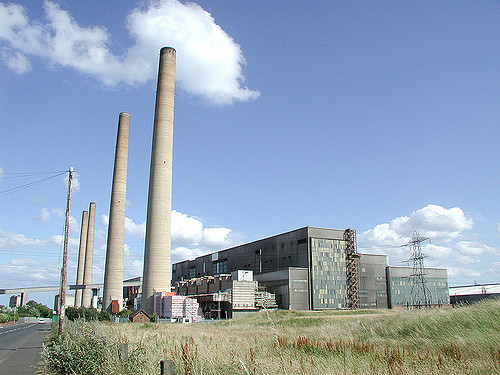Blog
-

Geiger Readings for Sep 03, 2018
Ambient office = 91 nanosieverts per hour
Ambient outside = 83 nanosieverts per hour
Soil exposed to rain water = 88 nanosieverts per hour
Zuccini from Central Market = 133 nanosieverts per hour
Tap water = 89 nanosieverts per hour
Filter water = 77 nanosieverts per hour
-

Geiger Readings for Sep 02, 2018
Ambient office = 111 nanosieverts per hour
Ambient outside = 126 nanosieverts per hour
Soil exposed to rain water = 122 nanosieverts per hour
Organic avocado from Central Market = 92 nanosieverts per hour
Tap water = 69 nanosieverts per hour
Filter water = 63 nanosieverts per hour
-

Geiger Readings for Sep 01, 2018
Ambient office = 122 nanosieverts per hour
Ambient outside = 116 nanosieverts per hour
Soil exposed to rain water = 119 nanosieverts per hour
Organic avocado from Central Market = 126 nanosieverts per hour
Tap water = 74 nanosieverts per hour
Filter water = 62 nanosieverts per hour
Dover sole – Caught in USA = 129 nanosieverts per hour
-

Common Everyday Sources Of Radiation – Part 3 of 4 Parts
Part 3 of 4 Parts (Please read Parts 1 and 2 first)
Living at a high altitude exposes people to about twice as much charged particles and ultraviolet radiation as people living at sea level. If you are sensitive to ultraviolet radiation, you need to take more precautions if you live in such places as Denver, Colorado.
Granite counter tops are all the rage in fancy homes but they have trace amounts of natural uranium and thorium. One of the decay products of uranium is a radioactive gas called radon which emits both alpha and beta particles as it decays. People are concerned about radon contamination from soil high in uranium and commercial radon detectors are widely available. Fortunately, most of the radon generated by granite counter tops is trapped in the crystal matrix of the rock and poses no health risk.
Grand Central Station in New York City is constructed from granite and has a granite foundation. As with granite counter tops, most of the radon gas generated by the decay of uranium in the granite is trapped in the rock. However, Grand Central Station does emit more radiation in a year that would be allowed in a nuclear power plant. The people passing through the station will not be exposed to much radiation but that would not be true for people who work there. Fortunately, even that level of radiation exposure does not pose serious health problems.
X-rays are an obvious source of high energy electromagnetic radiation that many people are exposed to. Properly calibrated X-ray machines are considered to be relatively safe with respect to radiation exposure. On the other hand, many X-ray machines emit more radiation than allowed by regulations. It is estimated that a single chest X-ray results in radiation exposure that is equivalent to twenty percent of the radiation that a nuclear power plant is permitted to emit in a whole year. Possible health effects from X-rays has to be balanced against the possible benefits of medical diagnosis that might reveal serious medical problems.
Cranial CT scans are frequent diagnostic tools in medicine. They employ a narrow beam of X-rays and subject patients to much more intense electromagnetic radiation that generic X-ray machines. A properly calibrated CT scanner can emit eight times as much radiation as a nuclear power plant is permitted to emit in a year. As with generic X-ray machines, possible health effects from CT scanners have to be balanced against the possible benefits of medical diagnosis that might reveal serious medical problems. And, also as with generic X-ray machines, they must be calibrated properly or they will expose the patient to much higher levels of radiation.
Cigarettes are known to be carcinogenic from the chemical constituents of tobacco as well as additives. Tobacco leaves contain traces of the radioisotope Polonium-210. This radioisotope is a strong alpha particle emitter It is very poisonous and can build up in the lungs and other organs of a chronic smoker and pose an addition threat above and beyond the chemicals in the cigarettes.
Please read Part 4 -

Geiger Readings for Aug 31, 2018
Ambient office = 107 nanosieverts per hour
Ambient outside = 98 nanosieverts per hour
Soil exposed to rain water = 100 nanosieverts per hour
Red bell pepper from Central Market = 100 nanosieverts per hour
Tap water = 69 nanosieverts per hour
Filter water = 64 nanosieverts per hour
-

Common Everyday Sources Of Radiation – Part 2 of 4 Parts
Part 2 of 4 Parts (Please read Part 1 first)
Airport scanners employ a specific band of the electromagnetic spectrum called the terahertz band. This band falls between infrared band and the microwave band. Terahertz radiation is almost complete blocked by human skin and is not thought to be very dangerous.
Flying in an airplane at thirty-five thousand feet exposes the passengers to radiation from space which is usually blocked by the atmosphere near sea level. This radiation consists of cosmic rays. There is great variation on the amount of such radiation encountered by passengers and even relatively high doses are a few percent of natural background radiation for a single flight.
Coal power plants emit a lot of radiation carried in the smoke from the stacks. There are traces of radioactive uranium and thorium in the coal that can become part of the ash that travels with the smoke. Alpha particles and gamma rays are emitted by uranium. The amount of radiation from ash is spread of a large area and poses little threat to health. On the other hand, the ash that does not get carried up in the smoke and the slag from the boiler do contain dangerous amounts of radioactive materials.
Thorium, potassium-40 and even depleted uranium have been used in the past to create colorful glazes in ceramics and well as color in glass. Alpha particles are the main type of radiation from these sources. There is a piece of glass from ancient Rome which contains uranium for color. Some older dinnerware was decorated by glazes containing radioactive elements.
Exit signs in buildings are designed to stay on if the electricity fails. They accomplish this by containing the radioactive element tritium which emits beta particles. Since the only health threat would be from ingesting tritium, unless you eat parts of an exit sign, you will be safe.
Fluorescent lights used in many large buildings, schools, shops and even homes often contain krypton-85 which is a radioactive isotope that emits beta particles and gamma rays. As long as they are carefully disposed of when they burn out, they are safe to use.
Some smoke detectors contain the radioactive isotope americium-241 which emits alpha particles. It is surrounded by foil and other materials that block much of the radiation. Detectors are usually located on ceilings, so people generally don’t get close enough for there to be any danger.
Much of commercial kitty litter is made from a clay called bentonite that contains natural uranium and thorium. The uranium emits alpha particles. This is not a problem for the cats and cat owners but can be a problem if disposed of in landfills where ground water could leach the uranium and thorium into supplies of drinking water.
Glossy paper used for things like printing photographs gets its shine from a white clay called “kaolin.” Kaolin contains traces of natural thorium and uranium. The uranium emits alpha particles. An individual piece of such paper is no health threat.
Please read Part 3
